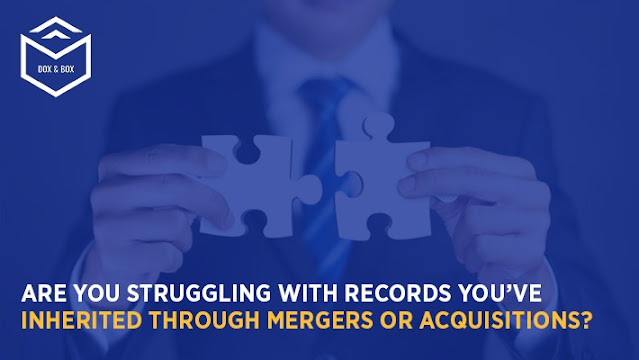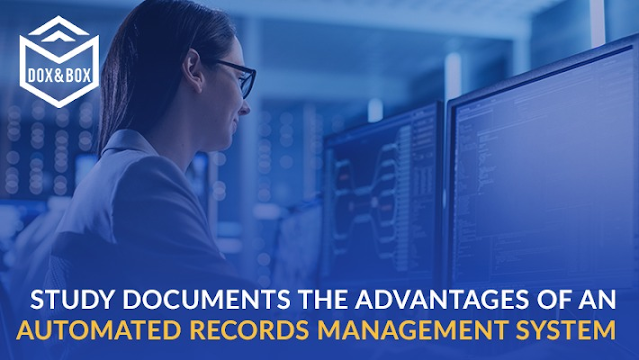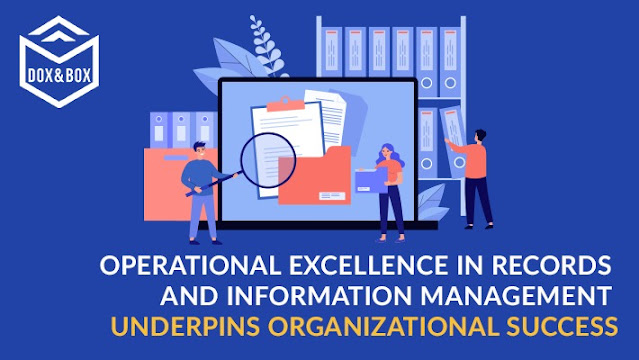Are you Struggling With Records you’ve Inherited Through Mergers or Acquisitions
Mergers and acquisitions are some of the most common parts of any business landscape. Blending two companies’ cultures, ethics, morals, departments, and most importantly, documents can be a daunting task.
These are not just collaboration between two different names, but a complete and wholesome operation that involves the merging of every single minute thing that completes a business. For a successful M&A, it is essential to understand the dynamics of the working and the controlled management of all related documents.
The management of the records associated with M&A is a complicated process; however, with the help of the following information, it can be a quicker and easier process.
Step 1: Discovery and Due Diligence
One of the most important steps in acquiring a target company is due diligence. Due diligence is the thorough understanding and analysis of all the records and documents of the target company and its audience. All the documents including, financial, operational, tax-related, human resources, IT, etc, are shared for the long-term benefits of both parties.
Value can be added to the merger even before the deal is signed, and there are two ways to do so,
● By making all the available information available to the team so that it can be processed by the document management systems
● By clearly understanding what every aspect of that availed information means.
To make this process more manageable, a Document Management System (DMS) is used. DMS helps in easy tracking, secured sharing, and quick access to all the records.
The record management service used to make these processes easier and efficient can help you gain access to protected warehousing services that will help you store all your vital records. These services involve seamless and segregated storage of all the records so that you can access them whenever required.
There is proper barcoding and labeling of all records, making it easier to locate and access the documents when required. With automation taking over every aspect of our lives, record management processes have also become a lot easier with the help of these.
A high level of security is maintained that helps maintain the integrity of the records as most of the obtained and existing ones contain confidential and sensitive information that can be mistreated if found in the wrong hands.
Good record management service providers also ensure that you are provided with a quick response in case of any emergencies.
The preliminary assessment of all the documents needs to be done very carefully and if privacy or legal reasons stop you from doing it, you can always hire a third party to do it for you. Many organizations have accomplished their negotiation goals for an M&A with the help of an outside committee.
Due diligence is an absolute priority, and lack of the same can result in future investment, compliance, and regulatory risks for the company. It can also affect the internal organization and reframing of the records.
Therefore, a record management system can be used in such scenarios. It helps get insights into what your company’s records already are, and how they are different from the merger’s records. It also helps address the issues related to the integration of the new records with the already existing ones.
Step 2: Pre Integration processes
This is the phase after the deal has been signed by both the involved parties. It involves two steps,
● The detailed inventory and audit of all the record management programs of the target company
● The audit of the records themselves
It is one of the most complicated processes as it involves handling the integration of all the record management software of the target company with the record management policies and controls of the acquiring company.
To move forward with this process, it is essential to understand the status of the record management system that is already in place in the target company. Questions like what kind of program is in use, how long has it been in use, etc, will help you figure out more about their systems.
Step 3: Integration
This is the main task and the real weightlifter in the entire process. It involves integrating all the acquired records with the existing records of the acquiring company while ensuring they are successfully integrated, including the technology, supporting staff, etc.
The integration involves three major steps,
1. Manage the physical movement of records
If the records are going to reach you via physical means, it is essential to ensure that the process is carried out smoothly. All the documents’ confidentiality is maintained on the way, while the safety and integrity are also untouched.
2. Management of integration of records and related systems
Combining the collected records in a shared space, numbering all files, converting the file design to a common type for both the existing and the new records, updating the file tracking and records management systems, and modernizing the record management training systems are some of the steps to undergo in the integration of records and related systems.
3. Training of the staff members
The new systems, the new records, procedures, and processes, all require essential training for people to be able to operate them at ease. You need to make sure that the staff is properly trained so that they can seamlessly work in the transition period and be productive at the same time.
Once the staff members are well trained in operating the new systems, the entire workflow becomes smooth and efficient.
Step 4: Post Integration Period
Regardless of how well planned every process of the M&A was, there are still so many things that can go wrong during the integration. You need to keep an eye out for any crucial changes or requirements post-integration as well to ensure that everything runs smoothly as planned.
Addressing all the risks and privacy issues, checking if the staff is ready to deal with the new systems, investigating if the new systems are working properly and if there’s a requirement for any more training sessions for the staff to deal with the new systems and methods. All these are some of the common questions that you need to address once the integration is a done deal.
Optimized processes, a need for a streamlined flow of records and information, and governance are all required for an M&A to deliver efficient results in the future. Any team hoping to get a successful merger and acquisition in their company needs to address the issues that will come with the associated records.
These records might seem one of the million important things that need your consideration; however, if you look closely, this is the required key for a well-oiled and smooth integration of two companies.
Dox and Box offer all these facilities at an affordable price. Their comprehensive packages and systems are easy to understand and convenient to use which gives the company an added advantage of not spending too much time understanding the working of the new software and management systems.
Source: https://www.doxandbox.com/blog-details/are-you-struggling-with-records-youve-inherited-through-mergers-or-acquisitions




Comments
Post a Comment